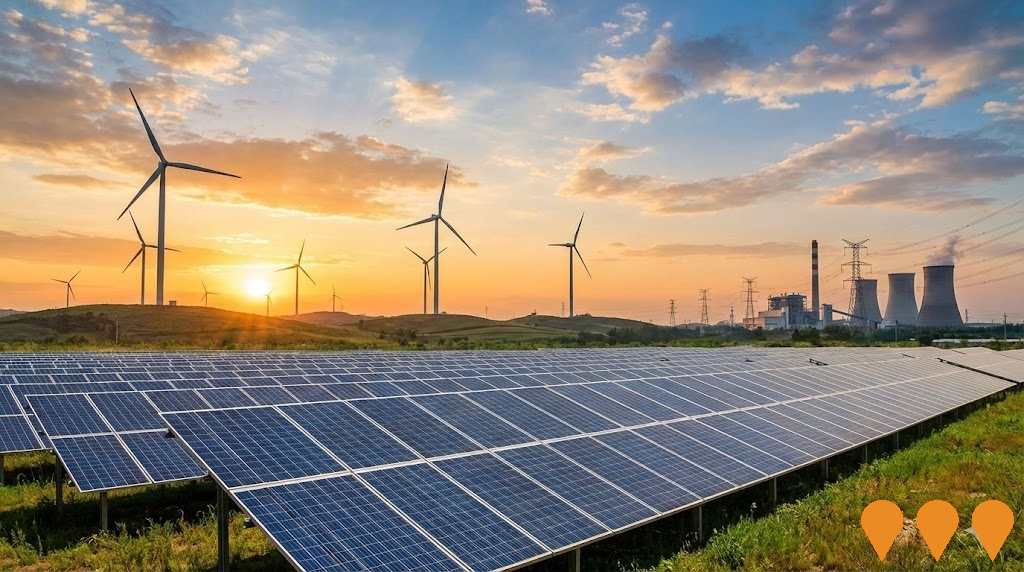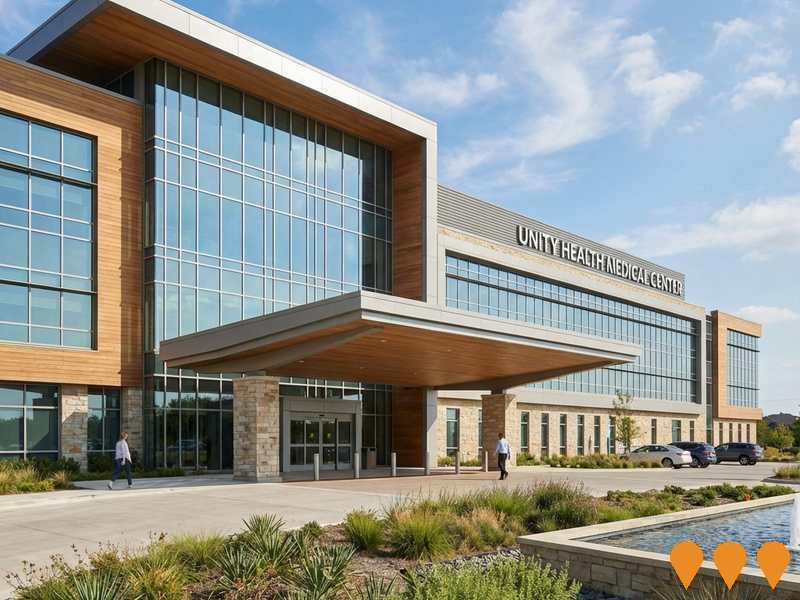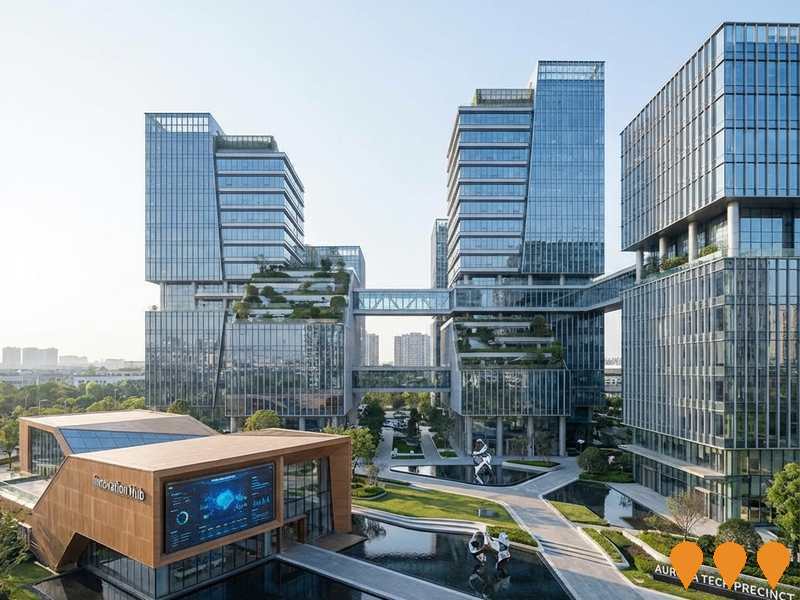Chart Color Schemes
est. as @ -- *
ABS ERP | -- people | --
2021 Census | -- people
Sales Activity
Curious about local property values? Filter the chart to assess the volume and appreciation (including resales) trends and regional comparisons, or scroll to the map below view this information at an individual property level.
Find a Recent Sale
Sales Detail
Population
Caloundra West - Baringa lies within the top 10% of areas nationally in terms of population growth performance according to AreaSearch analysis of short and medium-term trends
Caloundra West - Baringa's population is around 25,032 as of Aug 2025. This reflects an increase of 9,325 people since the 2021 Census, which reported a population of 15,707 people. The change is inferred from the estimated resident population of 21,955 from the ABS as of June 2024 and an additional 3,541 validated new addresses since the Census date. This level of population equates to a density ratio of 528 persons per square kilometer. Caloundra West - Baringa's growth rate of 59.4% since the 2021 census exceeded the non-metro area (8.6%) and the national average, marking it as a growth leader in the region. Population growth for the area was primarily driven by interstate migration that contributed approximately 82.4% of overall population gains during recent periods.
AreaSearch is adopting ABS/Geoscience Australia projections for each SA2 area, released in 2024 with 2022 as the base year. For areas not covered and years post-2032, Queensland State Government's SA2 area projections are adopted, released in 2023 based on 2021 data. Considering projected demographic shifts, exceptional growth is predicted over the period, placing Caloundra West - Baringa in the top 10 percent of locations outside capital cities by 2041. The population is expected to expand by 32,996 persons to 2041 based on latest numbers, with an increase of 119.5% over the 17 years.
Frequently Asked Questions - Population
Development
The level of residential development activity in Caloundra West - Baringa was found to be higher than 90% of real estate markets across the country
Caloundra West - Baringa has received around 782 dwelling approvals annually over the past five financial years, totalling 3,912 homes. In FY-26 so far, 200 approvals have been recorded. On average, each dwelling accommodates 2.5 new residents per year between FY-21 and FY-25, indicating strong demand for housing in the area. The average construction cost of new homes is $389,000, which is below regional levels, offering more affordable housing options.
This financial year has seen $13.0 million in commercial development approvals, demonstrating moderate commercial growth compared to other Queensland regions. Caloundra West - Baringa has 225% more development activity per person relative to the rest of Queensland and significantly higher than national averages, reflecting strong developer confidence. Recent construction comprises 81% detached dwellings and 19% medium and high-density housing, maintaining the area's traditional low-density character focused on family homes. There are approximately 22 people per dwelling approval in the location, indicating an expanding market with population forecasts expecting a gain of 29,917 residents by 2041. Construction is keeping pace with projected growth, but buyers may face increasing competition as the population grows.
Population forecasts indicate Caloundra West - Baringa will gain 29,917 residents through to 2041. Construction is maintaining a reasonable pace with projected growth, although buyers could encounter growing competition as population increases.
Frequently Asked Questions - Development
Infrastructure
Caloundra West - Baringa has limited levels of nearby infrastructure activity, ranking in the 19thth percentile nationally
Changes to local infrastructure significantly impact an area's performance. AreaSearch has identified 88 projects likely influencing the region. Key initiatives include Aura Business Park, Aura Hotel, New Bells Creek Zone Substation, and The Wave - Sunshine Coast Rail and Metro. Relevant projects are detailed below.
Professional plan users can use the search below to filter and access additional projects.
INFRASTRUCTURE SEARCH
 Denotes AI-based impression for illustrative purposes only, not to be taken as definitive under any circumstances. Please follow links and conduct other investigations from the project's source for actual imagery. Developers and project owners wishing us to use original imagery please Contact Us and we will do so.
Denotes AI-based impression for illustrative purposes only, not to be taken as definitive under any circumstances. Please follow links and conduct other investigations from the project's source for actual imagery. Developers and project owners wishing us to use original imagery please Contact Us and we will do so.
Frequently Asked Questions - Infrastructure
The Wave - Sunshine Coast Rail and Metro
A transformative public transport project delivering a new heavy rail line from Beerwah to Birtinya (Stages 1 & 2) and a metro-style connection to the Sunshine Coast Airport via Maroochydore (Stage 3). Stage 1 is fully funded and targets completion by 2032 for the Brisbane Olympic Games.

Caloundra South (Aura) Railway Station
New dual-platform railway station on the North Coast Line to serve the Aura (City of Colour) master-planned community in Caloundra South. Part of the Beerburrum to Nambour Rail Upgrade (B2N) and Direct Sunshine Coast Rail Line planning, providing future connection to Brisbane and Sunshine Coast rail networks.

Aura Hotel
The Aura Hotel is a $45 million large-scale entertainment venue and hotel development featuring a 2,500-capacity live music venue with world-class PA and lighting system, band room, and mezzanine level. The Mediterranean-style venue spans three levels and includes internal and alfresco dining areas, six bars, gaming facilities, and multiple function spaces. Located in Australia's largest master-planned community, the hotel will back onto a 5-hectare Southbank-style parkland and aims to bring world-class musical talent to the Sunshine Coast region.

Aura Home + Life
An $80 million large-format retail and lifestyle precinct developed by Capital Property Group within the City of Colour master-planned community on the Sunshine Coast. Features major anchors Spotlight, Anaconda and Harris Scarfe plus additional homewares, lifestyle and bulky goods retailers across approximately 20,000 sqm. Includes food and beverage offerings, over 400 car parks and will deliver around 250 ongoing jobs. Construction is progressing well with opening scheduled for mid-2026.

Aura Business Park
Aura Business Park is a major industrial and commercial precinct within the Aura masterplanned community, designed to become a significant employment hub on the Sunshine Coast. The $215 million development comprises over 300 industrial lots accommodating light industry, manufacturing, warehousing, storage, bulky goods showrooms, commercial office space, research and development, and indoor sports and recreation facilities. Located adjacent to Bells Creek Arterial Road with direct connections to the Bruce Highway, the business park is expected to generate approximately 3,000 new jobs. With over 130 lots already sold and developed as of 2025, the park is rapidly establishing itself as the premier business location on the Sunshine Coast, featuring high-speed NBN connectivity and proximity to educational facilities, parks, and the future Aura Town Centre. The latest 2025 land release includes final remaining lots ranging from 1,550 to 3,902 square meters.

Bells Creek Shopping Centre
Regional shopping centre development to serve the growing Aura community with retail, dining, and entertainment facilities.

Bells Creek Road Upgrade
Major road infrastructure upgrade to support traffic flow to and from the Aura development, including intersection improvements.

Aura Water Project
The Aura Water Project involves constructing a new 12ML water reservoir and installing approximately 12km of new water pipeline from the Ewen Maddock Water Treatment Plant to the Aura development in Caloundra South to support the growing community's future water needs.

Employment
AreaSearch analysis places Caloundra West - Baringa well above average for employment performance across multiple indicators
Caloundra West - Baringa has a skilled workforce with an unemployment rate of 2.8% as of June 2025. There are 11,023 residents employed, which is 1.2% below the Rest of Qld's rate of 3.9%.
Workforce participation in the area is high at 70.3%, compared to the Rest of Qld's 59.1%. Key industries of employment among residents are health care & social assistance, construction, and retail trade. Health care & social assistance shows notable concentration with employment levels at 1.3 times the regional average. Conversely, agriculture, forestry & fishing has lower representation at 0.6% compared to the regional average of 4.5%.
Over the year to June 2025, labour force levels decreased by 2.3%, and employment decreased by 1.6%, resulting in a fall in unemployment rate by 0.7 percentage points. National employment forecasts from Jobs and Skills Australia, issued in May 2025, project national growth of 6.6% over five years and 13.7% over ten years. Applying these projections to Caloundra West - Baringa's employment mix suggests local growth of approximately 6.8% over five years and 14.1% over ten years.
Frequently Asked Questions - Employment
Income
The economic profile demonstrates above-average performance, with income metrics exceeding national benchmarks based on AreaSearch comparative assessment
Caloundra West - Baringa had a high national income level according to ATO data aggregated by AreaSearch for financial year 2022. The median income among taxpayers was $56,357 and the average income stood at $71,953. These figures compared to Rest of Qld's median of $50,780 and average of $64,844 respectively. Based on Wage Price Index growth of 13.99% since financial year 2022, current estimates would be approximately $64,241 (median) and $82,019 (average) as of September 2025. The 2021 Census showed household, family and personal incomes in Caloundra West - Baringa clustered around the 58th percentile nationally. The largest segment comprised 42.5% earning $1,500 - 2,999 weekly (10,638 residents), mirroring regional levels where 31.7% occupied this bracket. High housing costs consumed 18.9% of income, placing disposable income at the 54th percentile nationally and ranking the area's SEIFA income decile in the 6th position.
Frequently Asked Questions - Income
Housing
Caloundra West - Baringa is characterized by a predominantly suburban housing profile, with a higher proportion of rental properties than the broader region
In Caloundra West - Baringa, as per the latest Census, 86.0% of dwellings were houses while 13.9% comprised semi-detached homes, apartments, and other dwellings. In contrast, Non-Metro Qld had 70.4% houses and 29.6% other dwellings. Home ownership in Caloundra West - Baringa stood at 22.1%, with mortgaged dwellings at 44.4% and rented ones at 33.5%. The median monthly mortgage repayment was $1,891, lower than Non-Metro Qld's average of $1,950. The median weekly rent was $480, higher than Non-Metro Qld's figure of $450. Nationally, Caloundra West - Baringa's mortgage repayments were slightly higher at $1,891 compared to the Australian average of $1,863, while rents were substantially higher at $480 versus the national figure of $375.
Frequently Asked Questions - Housing
Household Composition
Caloundra West - Baringa features high concentrations of family households, with a higher-than-average median household size
Family households account for 80.3% of all households, including 38.7% couples with children, 26.4% couples without children, and 14.3% single parent families. Non-family households constitute the remaining 19.7%, with lone person households at 16.5% and group households comprising 3.3%. The median household size is 2.8 people, larger than the Rest of Qld average of 2.5.
Frequently Asked Questions - Households
Local Schools & Education
The educational profile of Caloundra West - Baringa exceeds national averages, with above-average qualification levels and academic performance metrics
Caloundra West - Baringa has 5 schools with a combined enrollment of 3,585 students. The area's school conditions are typical of Australia (ICSEA: 1032), indicating balanced educational opportunities. Among the schools, there are 2 primary, 1 secondary, and 2 K-12 institutions. Educational qualifications in the region show that 20.9% of residents aged 15+ have university degrees, compared to Australia's 30.4%.
The most common qualification is bachelor degrees (15.0%), followed by postgraduate qualifications (3.5%) and graduate diplomas (2.4%). Vocational credentials are also prominent, with 44.1% of residents aged 15+ holding such qualifications, including advanced diplomas (12.8%) and certificates (31.3%). Educational participation is high, with 31.9% of residents currently enrolled in formal education, including primary (12.1%), secondary (8.3%), and tertiary education (4.7%).
Frequently Asked Questions - Education
Schools Detail
Nearby Services & Amenities
Transport
Transport servicing is low compared to other areas nationally based on assessment of service frequency, route connectivity and accessibility
Caloundra West - Baringa has 36 active public transport stops. These are served by buses along five different routes. Together, these routes facilitate 570 weekly passenger trips.
The area's transport accessibility is rated as good, with residents on average located 303 meters from the nearest stop. Service frequency averages 81 trips per day across all routes, resulting in approximately 15 weekly trips per individual stop.
Frequently Asked Questions - Transport
Transport Stops Detail
Health
The level of general health in Caloundra West - Baringa is notably higher than the national average with both young and old age cohorts seeing low prevalence of common health conditions
Caloundra West - Baringa shows better-than-average health outcomes for both younger and older age groups. Common health conditions have low prevalence in these cohorts.
Private health cover is high, at approximately 55% of the total population (~13,842 people), compared to 52.7% across the rest of Queensland. Mental health issues and asthma are the most common medical conditions, affecting 9.0 and 8.1% of residents respectively. 71.8% of residents report being completely free from medical ailments, higher than the 66.2% reported in the rest of Queensland. The area has a lower proportion of seniors aged 65 and over, at 10.4% (2,603 people), compared to 22.3% in the rest of Queensland. Health outcomes among seniors are above average, mirroring the general population's health profile.
Frequently Asked Questions - Health
Cultural Diversity
The level of cultural diversity witnessed in Caloundra West - Baringa was found to be above average when compared nationally for a number of language and cultural background related metrics
Caloundra West - Baringa, as per the census conducted on Tuesday 9 June 2015, demonstrated cultural diversity above average levels. Specifically, 9.8% of its residents spoke a language other than English at home and 23.9% were born overseas. Christianity was identified as the predominant religion in Caloundra West - Baringa, with 44.0% of people adhering to it.
Notably, the category 'Other' comprised 1.1% of the population, which is higher than the Rest of Qld average of 0.5%. Examining ancestry, the top three groups were English at 31.9%, Australian at 26.9%, and Scottish at 7.3%. Significant disparities existed in the representation of certain ethnic groups: New Zealanders constituted 1.3% compared to the regional average of 1.1%, Maori represented 1.3% versus 0.7%, and South Africans made up 0.7% compared to the regional average of 0.6%.
Frequently Asked Questions - Diversity
Age
Caloundra West - Baringa's young demographic places it in the bottom 15% of areas nationwide
Caloundra West-Baringa has a median age of 33, which is younger than Queensland's figure of 41 and Australia's figure of 38. The 25-34 age group makes up 17.9% of the population in Caloundra West-Baringa, compared to Rest of Qld. The 55-64 age group makes up 7.8%, which is less prevalent than Rest of Qld. Between 2021 and present, the 35-44 age group has grown from 15.8% to 17.2% of the population. The 25-34 cohort has increased from 16.7% to 17.9%. Conversely, the 5-14 age group has declined from 16.3% to 15.2%. By 2041, demographic projections show significant shifts in Caloundra West-Baringa's age structure. The 35-44 age group is projected to grow by 133%, reaching 10,013 people from the current figure of 4,295.






